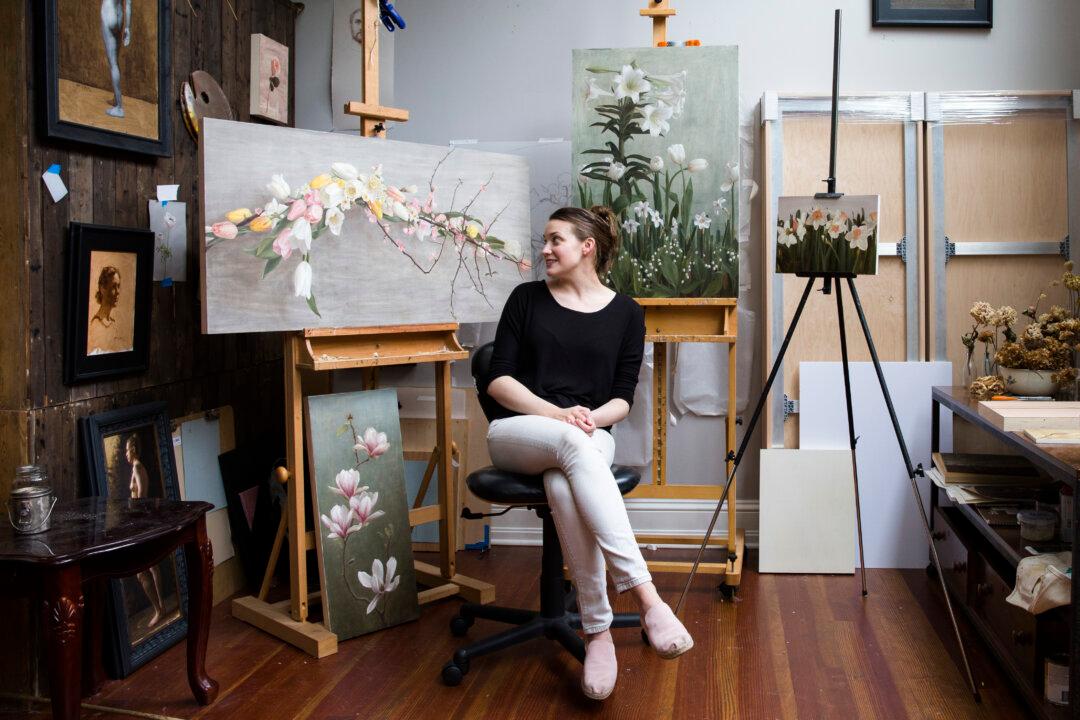SOUTHAMPTON, N.Y.—You cannot help but feel instantaneous joy when you first set eyes on Katie G. Whipple’s flower paintings. When you look longer, a plethora of meaning unfolds from every flower she has painted. They look triumphant in their beauty and grace. Even the ones with fallen petals engender a sense of wonder and surrender, reminding us of our vulnerability when faced with adversity or the fleeting nature of life.
“I paint one flower a day,” Whipple said in her summer studio in Southampton on Long Island, N.Y., which she shares with her husband, artist Brendan Johnston. She sat in front of a large painting of an arching quince branch, partially in bloom, with tulips and daffodils elegantly attached to it.






